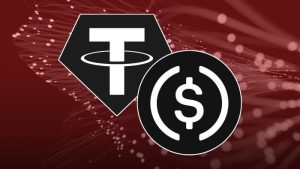American International Group, Inc. (NYSE:AIG) 2023 Keefe, Bruyette & Woods Insurance Conference September 6, 2023 4:20 PM ET
Company Participants
Peter Zaffino – CEO
Sabra Purtill – CFO
Conference Call Participants
Meyer Shields – KBW
Meyer Shieldsa
Okay. We hopefully have a lot of information to get to you. So, we’re going to get started at this point in time. I want to welcome Peter Zaffino, CEO of AIG; Sabra Purtill, who is the CFO of AIG. So, I’m feeling a little more intimidated than normal up here.
But I want to start off with some opening comments from Peter, and then I’ll lead in with some questions. And if you have questions in the audience, please raise your hand. And if we have time, then we’ll definitely get to those as well.
And with that, Peter, thank you so much for coming.
Peter Zaffino
Meyer, thank you very much. I was not really prepared to sit here and read to you at the beginning of this. But I just wanted to just have a few opening comments, if you don’t mind, just to sort of level set. It’s great to be here today at the KBW Insurance Conference. I appreciate you inviting AIG to participate.
Similar to last year and before we begin Q&A, I just want to spend a few minutes highlighting some of the progress we made since last year’s conference, which I think is significant. I’m going to begin with some of the more meaningful highlights and accomplishments of 2022. We achieved an accident year combined ratio, excluding catastrophes of 88.7%, with $2 billion of underwriting income. And for us, that was a $1 billion increase of underwriting income from the prior year.
We concluded AIG 200, which had to exit run rate savings for AIG of $1 billion, six months ahead of schedule. We completed the IPO of Corebridge Financial, the largest U.S. IPO of 2022 despite a very challenging market, as everyone knows. We returned over $6 billion of capital through share repurchases and dividends and reduced net debt by over $700 million for consolidated AIG, and we reconstitute the operating structure for our investment management operations through partnerships with Blackstone and BlackRock.
Pivoting to this year for the first six months of 2023, we built on that momentum and continued to deliver outstanding financial results. We achieved an accident year combined ratio, excluding catastrophes of written growth of 10% on an FX and lag adjusted basis and driven by 12% growth in our commercial business. We delivered these results through re-underwriting the portfolio over many years. Since 2018, we reduced our gross limits deployed in our general insurance commercial business by over $1.4 trillion, which approximately 70% of that is coming from our property portfolio.
Major highlight, I talk about it all the time of 2023 has been Lexington, which has seen net premiums written growth for four consecutive years. And if you look at where we started with that book of business of that growth, like none of it is really where we started. We’ve turned over the entire portfolio. This has been driven by strong retention, new business, double-digit rate increases for 17 consecutive quarters, including approximately 20% rate increase for the first half of 2023.
But the big part of the 2023 story has been the repositioning of AIG for the future. In the second quarter, we executed on several transactions to simplify the Company. In May, we announced the sale of Validus Re and Renaissance Re for $3 billion, which is expected to close in the fourth quarter of 2023, subject to regulatory approvals.
The sale of Validus Re represents a key milestone for AIG. The transaction allows us to significantly reduce our volatility in our PMLs and will generate additional liquidity and capital efficiencies to accelerate our capital management strategy. In connection with the sale of Validus Re, this week, it was announced that we entered into an adverse development cover with Enstar to provide protection on 95% of the reserves post the close of transaction.
While we have significant confidence in our reserve position, we believe it’s prudent to mitigate any possible downside. In July, we completed the sale of AIG’s Crop Risk Services business to American Financial Group for approximately $240 million. Also in July, we launched product clients select together with Stone Point Capital as a managing general agency that will serve as an independent platform for the ultra-high net worth market.
In August, Corebridge entered into a definitive agreement to sell health care to AXA for EUR 650 million, which is expected to close in the fourth quarter of 2023, subject to customary approvals. We anticipate the proceeds will largely be used for a special dividend to shareholders. We also announced that Corebridge intends to divest its U.K. life business. Advisers have been analyzing strategic alternatives, and we expect to have a further announcement by the third quarter earnings call. So as you can see, we’ve been very busy at the start of the year for AIG.
I’m going to briefly comment on the cat activity year-to-date. It continues the record-setting trend we’ve seen in the last five years. The first half of this year produced insured losses of over $50 billion, and nearly 70% of that coming from secondary apparel as a trend. We’ve also seen these activities continuing throughout the third quarter.
Some of the most notable events in the last few months include the tragic fire in Hawaii, which destroyed over 2,200 structures, Canadian wildfires burned over 12 million acres, Southern California saw its first tropical storm impact with Hillary since 1997. Hurricane Adelia made landfall in Florida as a powerful Category 3 storm, and Asia Pacific has already seen a number of events reaching typhoon and super typhoon status.
We remain well positioned as we overlay a conservative risk appetite. We talked about the limit deployment and reduction, a very comprehensive reinsurance program, and we believe it’s a strategic advantage for AIG in this marketplace and as we look to the future.
Turning to our balance sheet, we’ve been executing on a thoughtful capital management strategy that balances investing in profitable growth, reducing leverage and returning capital to shareholders through dividends and share repurchases. Starting in the second quarter, we increased our quarterly common stock dividend by 12.5%. In August, the AIG Board of Directors increased our share buyback authorization of $7.5 billion.
Once completed, that should help us achieve our $600 million to $650 million target share count. That’s the range we provided and believe we can get to the lower end of that based on today’s share price and the debt to total capital leverage should be in the low 20s. As I mentioned on the second quarter earnings call, we likely will accelerate share repurchases beginning in the fourth quarter when we expect to receive proceeds from the Validus Re transaction, subject to blackout periods and market conditions.
Additionally, we continue to evaluate options to further decrease our ownership in Corebridge before the end of the year. These actions are poised to deliver additional liquidity on top of the strong parent liquidity of $4.3 billion that we had and report at the end of the second quarter. This liquidity, along with the successful transformation of our core businesses, provides us with financial flexibility and bolsters the confidence we have in the future earnings power of AIG.
Lastly, as we look ahead, AIG’s next chapter will be focused on growing attractive businesses and continuing to shift our portfolio to deliver the best solutions we can for clients while achieving improved risk-adjusted returns. Our top priority in the near term continues to be reaching a sustainable 10% plus ROCE, which we will achieve through the four components I’ve mentioned several times on earnings calls.
As I’ve always said, the sequencing of each of these components has been very important to our journey. And I’m extremely proud of all that we’ve accomplished and our growing reputation as a company that can be reliably considered a high-quality, consistent delivery of results while managing multiple complex strategic priorities all at the same time.
So I just wanted to provide those overview. It’s a lot before we get into Q&A. So thanks.
Question-and-Answer Session
Q – Meyer Shieldsa
It is a lot, but it’s a lot of hopefully useful information. I want to hone in on one that you made, and that’s with regard to reinsurance protections because right now, you’re in the unique position of one being a major reinsurance buyer, but also having insight into the reinsurer mindset because you own Validus Re.
When we look forward, I guess, how should we think about — how much of the protection you have remains with you once Validus Re has gone and your overall expectations for the next phase as a reinsurance buyer, what the reinsurance market will look like?
Peter Zaffino
Yes. So let me start with what I think happened at 1/1, and then I’ll talk about specifically with AIG. But we here last year, we always start beginning of September, talking about the 1/1 renewal season. And quite frankly, it tipped on its head once there was more catastrophe activity. And the retro market contracted — the aggregate retro market disappeared and the occurrence retro market was there. It really drove reinsurance pricing up.
But when reinsurance companies talk about risk-adjusted returns and risk adjusted, looking at PMLs and how they actually look at exposure they moved away for risk. All perils became named perils and the return periods of where they attach all moved up, which translate, you see it happening all over the place this year is that insurance companies are just forced to either buy a lot more or take a lot more net. And you can see it through the net losses that have happened through the first six months. They’ve been substantially more than what would have been typical for some of the companies in the past.
AIG did not do that. I mean, we kept our attachment points largely the same. In some cases, even lower them in our international business. Aggregate disappeared. We still were able to buy aggregate cover. So we dealt with the severity and frequency. Some of it was back to the future where you saw a lot more occurrence covers in the industry, and I think it gave us a competitive advantage because that’s largely priced into our business today. We increased the frequency in terms of how we fund for cat as well as the reinsurance cost.
So I think that really does help us. And you see a lot of companies out buying midyear, have a lot more retention. And quite frankly, even if the market is benign for the rest of the year, there’s still going to be a lot of demand because it just wasn’t placed. And that supply will be limited. I mean you’ll see a little bit more in the ILS space, but I think reinsurers have really sort of flipped the switch in terms of where they sit in terms of the demand for reinsurance.
So I think we’re in a great place. and we’re able to control volatility, primarily through underwriting, but having a very strong reinsurance program and not writing up the market but staying committed to the retentions and the net that we’re comfortable with.
Meyer Shieldsa
All right. Fantastic. As you mentioned, there’s been a tremendous amount of change at AIG. And I think last year, when you came, there was also an incredibly impressive list of accomplishments in the preceding 12 months. And so I’m not going to ask what you’re going to do next.
But I was hoping you take through maybe a little bit more detail on the thought process for some of the businesses you’ve sold. Just in Validus Re because there is inherent volatility associated with that. The crop business, we think might be otherwise Laya and the U.K. Life. Can you take us through the thought process in terms of what you want to be when that’s done?
Peter Zaffino
Yes. So, each of them have a different reason why, and when you look at structuring the portfolio, you mentioned Validus Re first. Cat reinsurers or even if you have reinsurance that is more balance is inherently volatile. And so you have a choice, either you take the volatility or you end up buying dilutive retro or reinsurance that cuts in the margin.
And so like as we talk on one side that we’ve reduced $1.4 trillion of gross limit and yet taking more cat risk in a reinsurer wasn’t optimal. And quite frankly, we’ll have a lot more flexibility going forward in terms of how we buy reinsurance because if the retro isn’t available, we end up buy more on the AIG retention side, so we control volatility for the group.
So Validus wasn’t a business that we were out looking to sell. It wasn’t a business that was marketed. It was just a conversation with Kevin O’Donnell, Renaissance Re. They have a different capital structure, and they saw opportunity for scale. I mean, Kevin can speak for himself, but I think he thought it was very opportunistic in terms of how he can actually build his business.
And for us, it really wasn’t going to be core if there was an opportunity to divest it and just focus on the insurance business and of course, get the appropriate economics for it, that was something that we were interested in doing. We only spoke to Ren. Didn’t have to go beyond that and wouldn’t have if we couldn’t have reached a deal.
On Crop Risk Services, again, I think you need scale in the ag business. It is based off commodity pricing and farmers’ yield and it was a good business, but I think it was better with Great American. And so getting more scale for that business was going to be important didn’t really fit in the portfolio. And so that’s something that we have been talking about for the better part of the last year and felt that, that was a very good outcome.
In terms of Laya and U.K. Life, I mean, we’ve been really focused Corebridge has on its core business. It has great shelf space on its products in the United States. A lot of people didn’t even know we had an MGA that wrote health care in Ireland, people knew a little bit about the U.K. business, but it just wasn’t core.
And so, we wanted to be very transparent and visible that we plan to divest the businesses, if we could get the right partner and the right economics, we were going to do that. So I think in Lee’s case, we ran a process that ended up being very successful will be a great owner and we expect to have a similar outcome with U.K. Life as we proceed through the rest of in the next 60 days.
Meyer Shieldsa
Fantastic. That’s helpful. I do remember when AIG bought Laya. And I think at the time, there was an unrealistic argument about AIG getting out the life insurance, and it was taken is moving in the other direction. But again, that was several lifetimes ago.
Can you take us through the upside and maybe downsides of the MGA structure for high net worth. And this is a broad question, and maybe it’s been sharpened a little bit with Florida’s very recent decision yesterday saying excess and surplus lines, maybe not. And just to clarify, that’s some not being too cryptic. They’re basically saying that some of the freedoms that non-admitted companies typically have in Florida have been suspended under an emergency order. So with that, what should we expect from AIG high net worth or private client services?
Peter Zaffino
Well, there’s several different key areas of focus when you talk about the high net worth space. One is it’s a — forget about AIG for a second. It’s just a model that has come under pressure in terms of all the — whether it’s inflation, supply chain, cat risk, secondary perils.
And now the density of risk is exacerbated because of COVID, where you have home prices increasing, you have more density all in cat zone. So it’s a business model that’s been under pressure, which means you have to control aggregate, and you have to be able to price appropriately, and so, yes, Florida.
E&S, I don’t know why that is viewed by a lot of states as like the second choice. It’s a great choice. It’s a way in which you can solve risk issues with limits structures, price, terms and conditions, and enable capacity to be able to grow the business. So that is something that will evolve over time.
For us, we had too much aggregation. That was AIG story. I mean the commercial, the personal. And as you started to see cat costs, you can’t really generalize it because what happened in the high net worth space was much more at the lower return periods, even though it had massive exposure, if you had a big quake or if you had a massive windstorm hurricane in the Southeast that was challenged.
And so you can’t keep up a little bit with the loss cost and so you need to really have more spread of risk. And so that’s what we’ve been doing at AIG over the course of several years. One is reducing aggregate, buying dilutive reinsurance, quite frankly, to reduce volatility. We set up a syndicate, which worked really well in terms of as we were re-underwriting to take volatility out of the results in terms of the low return period cat.
And then we felt that we have the barrier to entry in high net worth is a service business. It’s really valued by customers. And so you have an infrastructure, whether it’s through claims, capabilities of filed forms, expertise in terms of multiple products, whether it’s umbrella, obviously, auto, homeowners, fine arts. There’s a lot of other products that are very important to our customers, and we already have the infrastructure.
And so instead of just like downsizing the business and staying in the space that we like, which is almost a high net worth, where we can control density and aggregation better and think that the attritional loss ratios are more attracted, we decided to work with Stone Point to set up an MGA, where other capital will be attracted to be able to serve a wider range in the high net worth space that AIG may have the risk appetite for.
So I think we’re going to stay in the ultra-high net worth, we’re going to have the infrastructure be part of the MGA and we’ll be bringing on, the MGA will, other insurance companies and other capital providers to fulfill their risk appetite and allow the MGA to grow in an area where I think most companies are not looking to necessarily — if they already have a portfolio grow significantly in that space.
So there’s a bunch of different variables that led us to the conclusion, but — we are really pleased with the progress that we made and expect to see other capital providers on the MGA in the coming quarters.
Meyer Shieldsa
Should we think of this floor to move as maybe an impediment to new capacity coming in?
Peter Zaffino
I don’t because when we look at — I believe it’s the way the business has to start to transform. Right now, I would think with us, we’re probably 10% excess and surplus lines. I don’t know what that should be. It’s got to be more than 10%. We’ll be half the book, I don’t know.
But I do think the new capital providers will likely be more admitted, with non-admitted being secondary. So we’re not attracting capital to come in just not admitted because there’s an opportunity. I think it’s going to be having multiple capabilities in order to be able to responsible, I think the clients’ needs.
So it’s a long-winded way of saying, I think the capital coming on a minute basis, but not admitted should be opportunities for them to have things that they want to put in an excess of surplus lines for more customization.
Meyer Shieldsa
Okay. Yes, that makes sense. And certainly, one of our concerns is the we’re getting a little bit closer to an availability crisis in California, in Florida.
Peter Zaffino
Well, that’s the profit for Florida without making it like you’re not going to do E&S, and there’s no more capacity admitted. Reinsurance costs are going up. I think you’re just going to have more people withdrawal.
Meyer Shieldsa
Yes, that’s — it seemed a little excited to me to be really honest. A couple more questions, if I can, on the simplification side. I don’t know if this is a question for Sabra. But obviously, you’ve got the actual secondary offerings to come. Besides that, what steps are there in the separation from Corebridge?
Peter Zaffino
You want me do the one, the ambiguity of not answering it?
Sabra Purtill
Yes.
Peter Zaffino
So write that down. That’s my specialty. But the base case remains a secondary. We’ve always said we’re going to be prepared as soon as we have the lockup period expire. But that doesn’t mean we go when the lockup periods expire. We’re looking at all the alternatives that would exist for this business. I want to be very disciplined. We think it’s undervalued relative to just the fundamentals, if you look at its peer group, the strength of the balance sheet, cash flow, liquidity, it’s just a very good business.
Again, getting rid of the non-core assets will be advantageous for them. And look at AIG wants to be focused on sell-downs, again, with the secondary being the base case. But we can look at other alternatives as we get to year one, the anniversary of the IPO. I would expect the next trade down not to get us below 50, but put us in a position where the trade after that will allow us to deconsolidate and then both companies will be independently ready to perform on their own.
Meyer Shieldsa
And operationally — I’m sorry, go ahead.
Sabra Purtill
Yes. I was just saying that operationally, the work streams have been going hard at it for the — really the last three years as we seek to stand up Corebridge operationally, including cyber, IT, corporate infrastructure systems. So we’re about a good piece of the way there, but that operational processes is an impediment to doing the secondary.
Meyer Shieldsa
Okay. That makes sense. And then this is my final question on simplification. That is when I think of specialty and the agility that’s necessary to succeed in specialty, I don’t necessarily think of Japanese personal lines in that context because the regulatory environment there seems to place an emphasis on stability. I’m not questioning the appropriateness of that. I’m trying to see how that fits in with the rest of what will be AIG going forward.
Peter Zaffino
If you think of AIG, really, I would look at it in three components where you have specialty businesses that have real competitive advantages, whether it’s in the excess surplus lines, the syndicate, our global specialty platforms. You have commercial businesses at scale that we have real underwriting expertise that are globally balanced, think of financial lines, property, what we have in casualty, some of the areas like Glatfelter, real specialized businesses that I think really compete well in the markets that they trade.
And then the last piece is really personal insurance businesses that are at scale that have real opportunities for growth. And I put Japan in that category. I mean there’s a couple of pieces of business in particular in Japan or segments. Accident Health is one across international that we can grow scale but investing in the digital capabilities and product, and so expect to see more organic growth there.
But Japan is a unique country to have an insurance company. I’m very committed to it. We’re the largest non-domestic insurance company in Japan, but you got to remember like the distribution is very different than the United States or even in Europe. A lot of the agents — I mean, you’re not — if you look at the middle market, you’re going in to grow organically in the United States, you have to take it from carriers that are well established and have tremendous relationships with our agency distribution.
You should not apply that in terms of how you think of Japan because a lot of times, the independent agents or more captive agents are already aligned with the insurance company that they’re already trading with. So we have an enormous distribution within AIG Japan that doesn’t need to take market share from Tokyo or MitsuSumato or Sampo in order to grow more product, more capabilities. And so we’ve been investing in digital workflow, which is going to be very helpful in terms of servicing. And that’s really cycle time on how quick can you get quotes out, how quickly you can get policies out.
And then also digital capabilities for quoting for our agents. And we’ve been investing a lot on that. We spend a lot of time in terms of our focus and believe that like the last, I think, eight months is the first time we’ve had consecutive growth in Japan in a decade. So starting to see organic growth, more product, more capabilities and believe — yes, it is regulated.
But you got to remember, a lot of times, Japan market is very different. And if you take auto, as an example, the core file product is marginal, but a lot of auto policies have 50 to 60 endorsements, which have different economics. And again, it makes it harder to standardize workflow, but it’s not just isoform that you file a loss cost and match your price, you do have something similar to that, but it’s got a very common adoption of different endorsements to actually complete the full product.
So there’s a lot of opportunities. There’s not a lot of cyber that’s sold, and I think being a global company with a ton of insight on how to do that at SME through already an established distribution capability will give us real opportunity. So I think that market presence, size, scale and investment makes Japan a very attractive market for us to grow and improve profitability.
Meyer Shieldsa
Okay. That’s tremendously helpful. I want to switch gears briefly to talk about loss reserves. I do get questions a lot, not necessarily 2020 and subsequent because the overall premise of the industry is that hard market years have better reserving. 2015 and prior, you’ve got the ADC. But in between, you’ve got like some soft market years, where I think it’s fair to say that the underwriting improvement has necessarily been intact. So how do you — how should investors think about — I’m thinking particularly casualty, professional lines reserves from those accident years?
Peter Zaffino
Do you want to take that one?
Sabra Purtill
Yes, I’ll take that. And as you noted, we do have the ADC for the North American Commercial Lines book for 2015 and prior. And also to note, the 2016 to the 2019 accident years or years where the new management team was here, we were going through an extensive change in underwriting and the rest. So we do pay intense attention to those years.
Now to note, they are getting more seasoned I think we’ve got seven years on the 16 and each year that goes by, we have a better understanding of what the frequency of the loss trend would be. As you know, social inflation in these nuclear verdicts, are the risks that we look for. But our basic philosophy is to react to the adverse news quickly and to wait to see if good news actually develops.
I talked a little bit about this on the last earnings call as we think about adjustments that we’ve made to our loss development factors for 2020 and subsequent because of the impact of COVID, the shutdown, the courts, all that on the loss reserves. So, you can never say never. Third quarter is when we do our deep dive on a significant portion of our casualty reserves, including international. But we — like I said, we’ve been watching the trends intently. And we’re obviously aware of what’s going on in the market with respect to the inflationary trends.
Peter Zaffino
The other factor I’d like to add in, and again, it’s really more towards as we started ’17, ’18 and then beyond. You have to remember that one is the portfolio was totally re-underwriting. And again, it took a couple of years to get to that. But AIG used to take $100 million net each and every casualty risk. That was their risk appetite.
And so anything as Sabra said, that went vertical or had development in those particular accident years was going to be adverse depending on how they reserve for excess. But like we — right away, we bought a lot of reinsurance and casualty.
So as you start to have these years age out, I’d have to go back and look at ’18 and ’19 precisely, but I think our maximum net, if we issued a $100 million policy, would be around $10 million. So, you’re not going to have the same type of volatility in the results. We have to watch it. We have to look at the inflation and all the implications with that.
But just don’t look at the portfolio the same way because it’s totally different on the underwriting side, but also we’ve protected it and have never gotten rid of the reinsurance. I mean look, we may get rid of some of the pro rata over time. But the excess of loss is something that is a core principle in terms of our strategic purchase.
Meyer Shieldsa
Right. And then that would be like the risk you’re keeping is kind of frequency and that should diminish faster than severity for retail lines. Okay. That makes a lot of sense. I have to revisit by saying that a lot of time is going to ask questions is to understand the thought process and not to suggest an alternative. So, I want to be very clear. You’ve been very clear that AIG’s capital priority is capital return, dividends, share repurchases, and those will be accelerating. What’s the thought process for that?
Peter Zaffino
Well, we look at the four components, all the time, Sabra and I and the team and making sure the first is making sure we have plenty of capital, and that means excess capital as of our writings today to be able to grow in what we think is a very profitable market and have the ability to do that without any constraints or restrictions. So that’s one.
And that’s been done over the course of the last 12 to 24 months and feel very good about where we are there. The other was, as we were getting Corebridge stood up as a public company, making sure that we were very focused on, I can’t really see in the consolidated results, but what does AIG’s leverage going to look like post deconsolidation and making sure we’re very focused on debt maturities.
And I think we’ve done a very good job there, not totally done, but we are, as of today, I mean, if we deconsolidated at the lower end of the range of where we want to be in terms of that 20% to 25% of which I outlined in total capital to debt.
And then focusing on a dividend, we haven’t really increased the dividend in any meaningful or credible way since the financial crisis, shows a lot of confidence in our liquidity, our earnings. And so that was really important to us. And then we become with the excess liquidity, really focused on getting to that share count of the $600 million to $650 million. I mean you get to the lower end, depending on share price based on what you know is liquidity coming in and the liquidity we have today and what we will generate in the future.
So I just want to make sure we focus on, it’s not either or. I mean, we just got a lot of the other components of the capital where we want them to be. There may be other opportunities to deploy capital, something is compelling. But our primary focus now is on share repurchases and continuing to keep the leverage at the low 20s upon deconsolidation.
Meyer Shieldsa
Okay. Fantastic. So now I’m going to ask questions there to ask like a company that hasn’t gone through as much the last few times. Like North America commercial, you’re still a major player. What are the growth opportunities that you think about now? Maybe the backdrop to this question is, we’ve been in a hard market for three, four, five years, and it’s lasting longer than I would have thought, but what do you expect going forward? But maybe let’s take a step back and answer it however you think is most useful.
Peter Zaffino
Not every answer is Lexington, but I can’t avoid it because I haven’t seen really in my career a business with more momentum and all the fundamentals of when you look at — you start with what type of retention and typically, Nexus and surplus lines, you don’t really have strong retention because the books churn a little bit more, but we’ve had really strong retention well over if it typically runs in the low to mid-60s, it’s in the low to mid-70s. New business has been phenomenal.
And when you look at the growth, it doesn’t really tell the story because we’ve got a churn the whole portfolio was largely — I don’t want to gobble up — I have a shot clock here, but I want to do in the stock clock in terms of what happened with excess and surplus lines. But you have wholesale brokers coming in.
Before AIG declared with Lexington that it was going to be a wholesale-only market, there was less than 10 wholesale-only insurance companies that accept the business from wholesale only. Ask Tim Turner ask Pat Ryan, I’m taking it from them. They think there’s over 80 today after Lexington made its choice. And so like that business is just different. If you look at the strength of wholesale, they are grabbing market share. They won’t tell you that they are. I mean there was no one that had north of $10 billion of premium placed in the market on a wholesale basis 10, 15 years ago, the top three are now over $30 billion.
That’s not going back into the mid market, the market starts to soft. Maybe some of it will — maybe some of it gets tempered. We saw some financial lines go out maybe some casualty. But if you look at where we’re growing or where the market is growing, it’s not only on property cat or cat-exposed risk, we’re growing as much in casualty as we are in property. So I just think that, that market is more here to stay and I think that we are incredibly well positioned to continue to drive growth there as we’ve gone into some of the middle market.
Wholesale distribution has done three things. One is it’s creating enormous expertise in the E&S space itself and broaden what is actually underwritten in they become a placement mechanism for the 40,000 independent agents that exist within the U.S. They have no market. They go to the typical admitted markets, but they had no market.
And all of a sudden, Amwins, Ryan, CRC build these enormous placement capabilities that they become so reliable for independent agents. And then all of this MGA and delegated authority — it’s not the old MGA is professional. They have premium that’s going to be in the market irrespective of the market conditions and companies positioned to match up to that are going to be rewarded. And I think, again, Lexington is going to be just terrific.
There’s other pockets where, again, financial lines gets blemish because of the overcapacity that’s come into the excess, which is basically 5% of our financial lines book. Yes, that’s under pressure. It’s competitive. You have companies coming in that don’t have the expertise in my opinion, don’t on the track record, that will find its natural course. But if we ride it all the way down, it’s going to be immaterial to the overall financial lines results. When you are lead underwriting and you can do have to put out massive limits. When you have that expertise, you have your ability to position yourself in the market well.
There’s things like property, we get accordion up or down on the market conditions. We have program business, and we have primary and excess casualty that’s performed very well. We watch casualty to make sure it doesn’t have the same dynamics as financial lines on the high excess. We’ve seen some size of that, not a lot. And then also just think about — you asked about North America, but on financial lines, it’s mostly a phenomenon in the United States.
You’re not seeing the same issues in international and financial lines as you are in the U.S., not seeing the price pressure. You’re not seeing as much capacity come in. And so therefore, we’re not seeing the rate reductions that we are in North America. But that’s a moment in time. I think we’re a really balanced portfolio and we can accord it based on market conditions — but I think certainly, the Lexington is going to continue to be the area where we have the biggest focus.
Meyer Shieldsa
Okay. And if I can play on that, there’s no Lexington on the international front?
Peter Zaffino
No. I mean you can try to think about Talbot that way as a syndicate where it has not the same E&S, it’s not doing non-admitted property, non-admitted casualty, but does have specialty classes that actually benefits from our global specialty platform. So we have significant presence across the globe in global specialty.
Talbot gets it both ways. They can either take a sign line through the underwriting of our global specialty businesses and follow or they can do it on their own. And quite frankly, Lloyds has gone back to the way it was 30 years ago, too. I mean like if you look back 10, 15 years ago, everybody wanted more syndicates is 30 in China. We’re going to go to Latin America.
We’re going to go over where it didn’t work. Everything has been pulled back, everything comes to London either comes through Singapore. Maybe some hubs in Miami, but by and large, is back to the way it was, which is everything is finding its way back to London and specialty classes. And I think we’re incredibly well positioned to take advantage of that.
Meyer Shieldsa
That’s funny. We talked about this as a cyclical industry and mostly we mean pricing, but there’s so many other aspects of it that come and go.
Peter Zaffino
But look, the reinsurance structures, I thought it was like 28 again. I mean that was like — was a lot of years ago. But a lot of the occurrence stuff the valid is sold — that’s the way it was structured 20 years ago. So, you’re right, it’s a little bit going back to the way it was.
Meyer Shieldsa
You touched on AIG 200 being done, and at schedule. I remember when you first introduced the concept, you talked about the savings and you talked about maybe more importantly, how it would make AIG easier to work with. So now that it’s done, can you give us a summary? Like what are the changes that you’ve seen besides the expense savings?
Peter Zaffino
Well, it was always going to be an improvement of the core capabilities in the Company. Now AIG have a lot of capabilities. So, some of it was core like workflow and making sure that we had the right underwriting systems. We’re very bold in IT, going from 15% public cloud to 80%, investing huge in data infrastructure. So, we’re a much better company from AIG 200.
The outcome was the expense savings, but the original plan in terms of making us better has all been really enhancing the Company in terms of our capabilities. We would not be able to do what we do in Lexington and other commercial parts of our portfolio without having data ingestion, workflow and the ability to get quotes out in an hour in Lexington’s case. And so, it’s really just improved the organization.
The commitment to workflow and straight-through processing is going to allow us in this new sort of AI world and digital workflow to not have to make dramatic changes, but to put new work flow together that’s just going to make us much more efficient. So, I think there was a lot of hard work, a lot of foundational work that’s going to position us. It’s already improved our capabilities, but I think we’ll have a lot of opportunities in the future to advance that.
Meyer Shieldsa
Okay. Fantastic. And then we’ve gotten a ton of information I have time, I think, for one more question. So, I’m going to ask about that, the next $500 million. And I recognize this is a delicate question. So, there’s obviously some discussion there. But how should we think about those savings emerging and the categories of expense?
Peter Zaffino
Deconsolidation, leaner operating model, a lot of overlap in areas that happen in the conglomerate. That’s not going to be — it will improve the organization, but it’s going to take out costs that are just not necessary. I mean it’s not going to be us outlining on earnings calls, so we need to invest in a platform, we’ll eventually get this through digital enhancement. That was more AIG 200.
This is going to be bringing the Company together. And you don’t need as much in terms of overhead operations because we built it in every country and you don’t need it, and we’re going to get after it. And so I think the identification is easier. A lot of the work has been done.
We don’t want to create risk by doing it too early. But as soon as we hit 2024, we’ll probably outline a lot more detail, fourth quarter call as to specifically where it’s coming from and what quarter we expect to get it out. I think that’s reasonable and one that we are already prepared to work through. But I think it’s going to be faster, it will be more efficient and will make the Company leaner.
Meyer Shieldsa
We’re going to hit 2024 a lot sooner than I would have thought.
Peter Zaffino
Yes.
Meyer Shieldsa
But with that, it’s been another phenomenal session. Thank you so much, Peter. Thank you, Sabra.
Peter Zaffino
Thank you.
Sabra Purtill
Thanks.
Read the full article here















